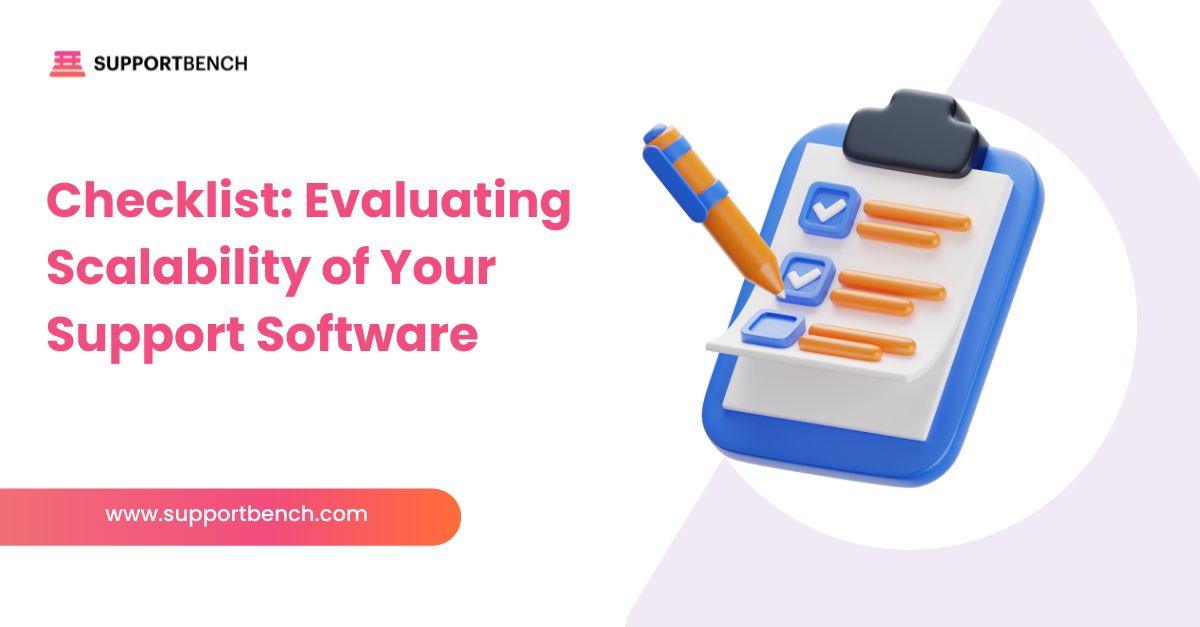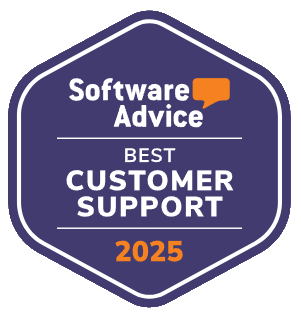an employee hits a technical speed bump, your support crew jumps in, solves the issue, and gets them back on track. But great support goes beyond quick fixes.
A well-run help desk acts like a smart dashboard. It identifies patterns, flags recurring issues early, and keeps teams moving smoothly through their day. When everything clicks, employees enjoy fewer disruptions, faster resolution times, and a more productive workday.
Want your help desk to run like a high-performance system? Here are practical ways to structure internal support for efficiency, reliability, and lasting impact.
Here is the Quick Answer:
An internal help desk improves employee support by centralizing requests, automating workflows, and tracking performance. Key components include ticketing, self-service, prioritization, and analytics. Avoid common pitfalls like overload and poor routing with clear SLAs and smart integration. A mature help desk cuts costs, reduces downtime, and boosts satisfaction.
The Strategic Benefits of an Internal Help Desk
An internal help desk isn’t just a tech function—it’s a strategic asset. A centralized support system boosts productivity, reduces downtime, and improves the employee experience.
Streamlined Operations
With a single point of contact, employees don’t have to guess who to reach out to. A help desk simplifies request submission, routing, and tracking so teams can focus on their work instead of chasing answers.
Reduced Downtime
Fast resolution of IT and HR issues—like software glitches or access problems—keeps employees productive. Minimizing delays prevents bottlenecks and ensures that operations stay on track.
Improved Employee Experience
When employees get timely, consistent support, it builds trust. Clear communication, issue transparency, and visible progress help staff feel valued and supported—leading to higher engagement and morale.

Core Components of a Strong Internal Help Desk
To operate effectively, an internal help desk must be built on several foundational components that keep workflows efficient and support responsive.
Ticketing System
This is the engine of your help desk. It should allow requests through multiple channels—email, chat, web form—and support features like status tracking, SLA monitoring, and auto-assignment.
Self-Service Portal and Knowledge Base
Providing employees with access to FAQs, manuals, and video guides empowers them to resolve routine issues independently, reducing unnecessary tickets and improving resolution speed.

Automation and Chatbots
Automation handles repetitive tasks such as categorizing, routing, and issuing acknowledgements. Chatbots offer 24/7 support for common inquiries, easing the burden on human agents.
Prioritization and SLAs
Clear ticket prioritization ensures urgent issues are addressed promptly. Service Level Agreements help define expectations and hold the help desk accountable to response and resolution timelines.
Analytics, Reporting, and Feedback
Tracking ticket volumes, response times, and satisfaction scores enables continuous improvement. Regular reviews and employee feedback uncover trends and inform process updates.
Proactive Support
A mature help desk doesn’t just react—it anticipates. By identifying recurring issues, the team can implement preventive measures like patch updates or internal announcements before problems escalate.
Integration with Other Systems
Connecting with HRIS, CRM, identity management, and asset tracking tools allows accurate, context-rich support and eliminates duplicate work across systems.
Top 10 Internal Help Desk Implementation Best Practices
These proven strategies provide a clear path to launching a scalable, high-performing internal help desk.

1. Simplify Request Submission
Use clean, intuitive forms with clear categories. Enable submission via email, chat, or portal—automatically converting messages into tickets.
2. Segment and Specialize Teams
Avoid funneling all issues to a single team. Instead, group support by domain (e.g., desktop, applications, HR) so experts handle what they know best.
3. Build a Unified Support Portal
Create a central hub for all internal service requests. Tools like Jira Service Management allow integration across departments including IT, HR, and facilities.
4. Define and Enforce SLAs
Set tailored SLAs by ticket priority (e.g., critical, high, low). Track average resolution time, first response rate, and SLA compliance to uphold accountability.
5. Use Automation Wisely
Apply automation for ticket routing, triage, and notifications. Deploy chatbots for common inquiries to reduce repetitive workload and speed up response times.

6. Maintain a Knowledge Base
Document recurring issues and update content proactively. Encourage agents to contribute after resolving tickets to keep content useful and current.
7. Gather Feedback and Train Regularly
Use satisfaction surveys and incident reviews to assess service quality. Offer continuous training in tools, policies, and soft skills to improve support consistency.
8. Monitor Key Metrics
Track KPIs like ticket volume, time-to-resolution, SLA breaches, and self-service usage. Use this data to guide staffing and workflow improvements.
9. Be Proactive
Run internal campaigns to address recurring pain points—such as login problems or software updates—before they generate a flood of tickets.
10. Scale and Adapt
Ensure your platform can grow with the business. Revisit SLAs, restructure teams, and adjust workflows to meet changing needs and headcount.
Typical Errors and How to Prevent Them
Even well-intentioned internal help desks can run into common issues that disrupt workflows and frustrate employees. Spotting these problems early—and putting safeguards in place—makes a big difference.
1. Excessive Ticket Volume
When requests pile up, delays are inevitable. Automate repetitive tasks, streamline forms, and use ticket deflection through knowledge bases or chatbots to keep volume manageable. Escalation protocols also help ensure critical tickets don’t get buried.
2. Poor Ticket Prioritization
Without clear urgency rules, high-impact issues can get lost in the shuffle. A defined prioritization matrix—based on business impact and urgency—helps teams act fast where it matters most. Train agents to apply it consistently.

3. Low User Adoption
If employees don’t use the help desk, it can’t help them. Make the portal intuitive and promote it across channels. Run onboarding sessions, distribute guides, and use reminders in internal comms to boost usage.
4. Fragmented Tooling
When systems don’t talk to each other, agents waste time jumping between tools. Connect your help desk with HR platforms, asset management systems, and knowledge bases to enable a smoother support flow.
5. Lack of Metrics
Without data, support improvements are guesswork. Set KPIs like resolution time, ticket volume, and CSAT. Use dashboards to track trends and make informed decisions about where to improve or invest next.
How to Mature and Expand Your Internal Help Desk
A basic help desk solves immediate issues. But to truly support growth, it needs to evolve into a proactive, scalable service layer that adapts to business changes.
Advanced Automation
Ericsson implemented a machine learning–based tool (TRR) to automate bug report assignment, handling 30% of incoming tickets with 75% accuracy. The system reduced resolution time by 21% and saved experienced engineers substantial manual effort. Its success shows how gradual rollout and stakeholder buy-in can make ML-powered automation a practical asset in internal support environments.1
Multichannel Support
Expand beyond email to channels like chat, mobile apps, and voice. This lets employees reach support how they prefer, improving responsiveness and overall satisfaction.
Tiered Support Structure
Introduce levels of escalation. Level 1 handles common issues, Level 2 addresses technical tasks, and Level 3 takes on strategic problem-solving. This structure improves efficiency and matches resources to complexity.

Proactive and Predictive Support
Use analytics to identify repeat issues and fix them before they escalate. Proactive measures—like auto-deploying updates or flagging at-risk systems—can prevent future tickets entirely.
Global Coverage
For organizations with international teams, consider round-the-clock support. Outsourcing or nearshore support models can offer 24/7 coverage. For example, Auxis achieved 82% first-contact resolution across 25+ countries using a nearshore setup.2
Continued Feedback Loops
Gather employee feedback regularly through surveys and interviews. Use that input to improve SLAs, training, and workflows. This keeps the help desk aligned with real-world needs as your business evolves.
ROI and Impact: Real Results from an Efficient Help Desk
A mature internal help desk isn’t just about resolving employee issues—it’s a lever for measurable gains in efficiency, satisfaction, and cost control.
- Operational Efficiency: Faster resolution times reduce cost per ticket and free up teams for strategic work.
- Employee Satisfaction: Clear communication and quick support build trust and improve engagement.
- IT Focus: By reducing reactive troubleshooting, IT teams can dedicate more time to innovation and system upgrades.
- Cost Savings: Automation, self-service, and selective outsourcing can lower support costs by up to 50%.3
- Scalable Growth: As organizations expand, a structured help desk scales easily across departments and geographies.
When well-designed, the help desk becomes more than a service—it becomes infrastructure that drives continuous improvement.

Implementation Roadmap
This five-phase roadmap outlines how to build, launch, and scale an internal help desk that aligns with evolving business needs:
| Phase | Objectives | Key Actions |
| 1. Assessment | Understand Current Support Landscape | Interview Stakeholders, Audit Tools, Quantify Downtime and Ticket Volumes |
| 2. Planning | Design Structure and Select Systems | Choose Platforms, Define SLAs, Design Workflows, Segment Support Tiers |
| 3. Launch | Deploy Pilot and Establish Initial Portal | Onboard Agents, Migrate Requests, Publicize Internally, Deliver Training |
| 4. Operate & Improve | Monitor and Refine Operations | Track KPIs, Gather Feedback, Host Retrospectives, Optimize Workflows |
| 5. Scale | Expand Capabilities and Coverage | Add Automation, New Channels, Languages, and Integrations as Business Grows |
In Conclusion
A well-structured internal help desk does more than fix problems—it drives productivity, reduces delays, and boosts employee satisfaction.
By shifting from reactive support to proactive, data-driven service, organizations gain better visibility and control over internal operations.
SupportBench offers a unified platform built specifically for internal support teams. It combines intelligent ticketing, SLA tracking, automation, and analytics to streamline processes and accelerate resolution times.
Its seamless integration with systems like HRIS, CRM, and asset management reduces overhead and ensures consistent service delivery across departments.
Looking to modernize your internal help desk? SupportBench provides the tools to turn it into a strategic asset. Contact us to learn more.















